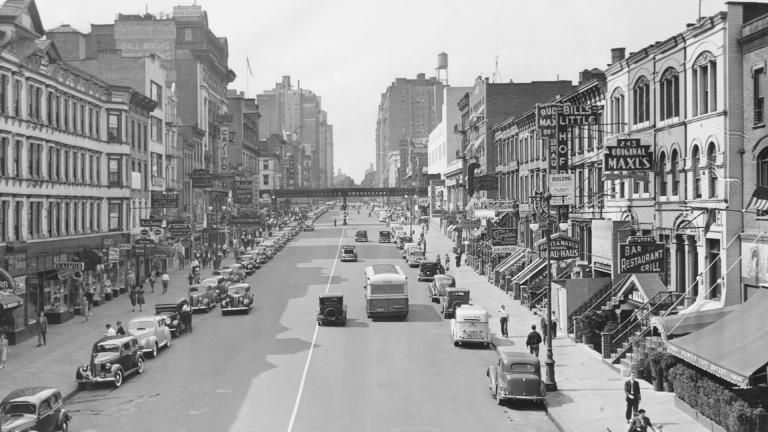
Read more about Modern History

They called her the 'Madame Queen of Harlem', and for good reason. Stephanie St. Clair played the numbers game better than anyone. One of Harlem’s most famous racketeers of the early 20th century, she was a no-nonsense woman who definitely wasn’t afraid to fight back.
Confronted with mafia intimidation and police corruption, ‘Queenie’ stood her ground, building her business into an extremely lucrative enterprise. She was also a vocal and effective campaigner for the rights of women and African-Americans.
A real force to be reckoned with, Stephanie St. Clair had an eventful life. Read on as Sky HISTORY discovers more about the ‘Madame Queen of Harlem.’
Want to learn more of history’s most notorious gangsters? Don’t miss Original Gangsters with Sean Bean, which starts Tuesday, 4 November on Sky HISTORY and HISTORY Play.
Much of St Clair’s early life is unknown. She was likely born in the West Indies on 24th December, 1897, on either the island of Grand-Terre or Martinique. However, it has also been suggested that she was born in France, St Clair herself declaring that she was of French-European heritage.
Her mother, Félicienne, was a determined single mum who raised her alone and made sure she went to school. When Felicienne fell ill and died, St. Clair got together enough money to leave the island. She headed first to Montreal, probably through the Caribbean Domestic Scheme, and then moved on to New York in 1912.
When she arrived in Harlem, she was only a teenager but knew how to present herself as a sophisticated Parisian. She spoke French, Spanish and English and was confident in regaling others of her colourful past.
St Clair was remembered as stylish, smart and fiery, someone who demanded respect and never tolerated an insult. The widow of her former lieutenant Bumpy Johnson, once said of Stephanie, 'She’d kick off her expensive high-heels and go toe-to-toe with any man or woman insolent enough to insult her breeding and character.'
Harlem in 1912 was full of culture, ambition and hustle. It was also where ‘the numbers game’
(an informal lottery game) was thriving, especially among Black working-class communities. St. Clair invested her savings and set up her own policy bank, employing Harlem residents and offering fair odds to undercut her rivals. She earned respect and loyalty at a time when it was extremely rare for women, especially Black immigrant women, to control financial enterprises.
St Clair didn’t just stand out for her business approach but how she defended it. She took out ads in Harlem newspapers warning her community against police corruption and publicly criticising officers. At a time when silence often meant survival, she made her defiance loud and visible, earning her the nickname 'Madame Queen of Harlem'.
When mobster Dutch Schultz tried to muscle in on Harlem’s numbers trade in the 1930s, St. Clair fought back. She rallied Black policy operators, attacked Schultz’s betting shops and urged the community to support Black-run businesses.
Even when Schultz retaliated with threats, kidnappings and murder, she refused to surrender. '[I’m not] afraid of Dutch Schultz or any other living man,' she said. 'He’ll never touch me! I will kill Schultz if he sets foot in Harlem. He is a rat. The policy game is my game.'
St Clair and Schultz’s feud ended in 1935 when Schultz was assassinated by the Mafia Commission. St. Clair marked his death with a telegram that read, 'As ye sow, so shall you reap.'
St Clair’s mix of wealth, power and activism made her stand out. She used her money and influence to help her community and fight against unfair treatment. At a time when both Black people and women faced serious discrimination, she boldly challenged the rules. Her approach proved that she could succeed and lead despite the obstacles against her.
Historian LaShawn Harris says, 'She was a risk-taker…willing to challenge normative ideas about gender and race.'
Her courage and impact have made her an unforgettable figure in American history.
Enjoyed learning about a fearless woman from history? Why not subscribe to the Sky HISTORY newsletter and get exclusive access to all the latest news, videos and articles.